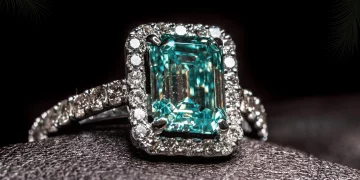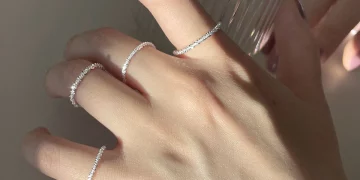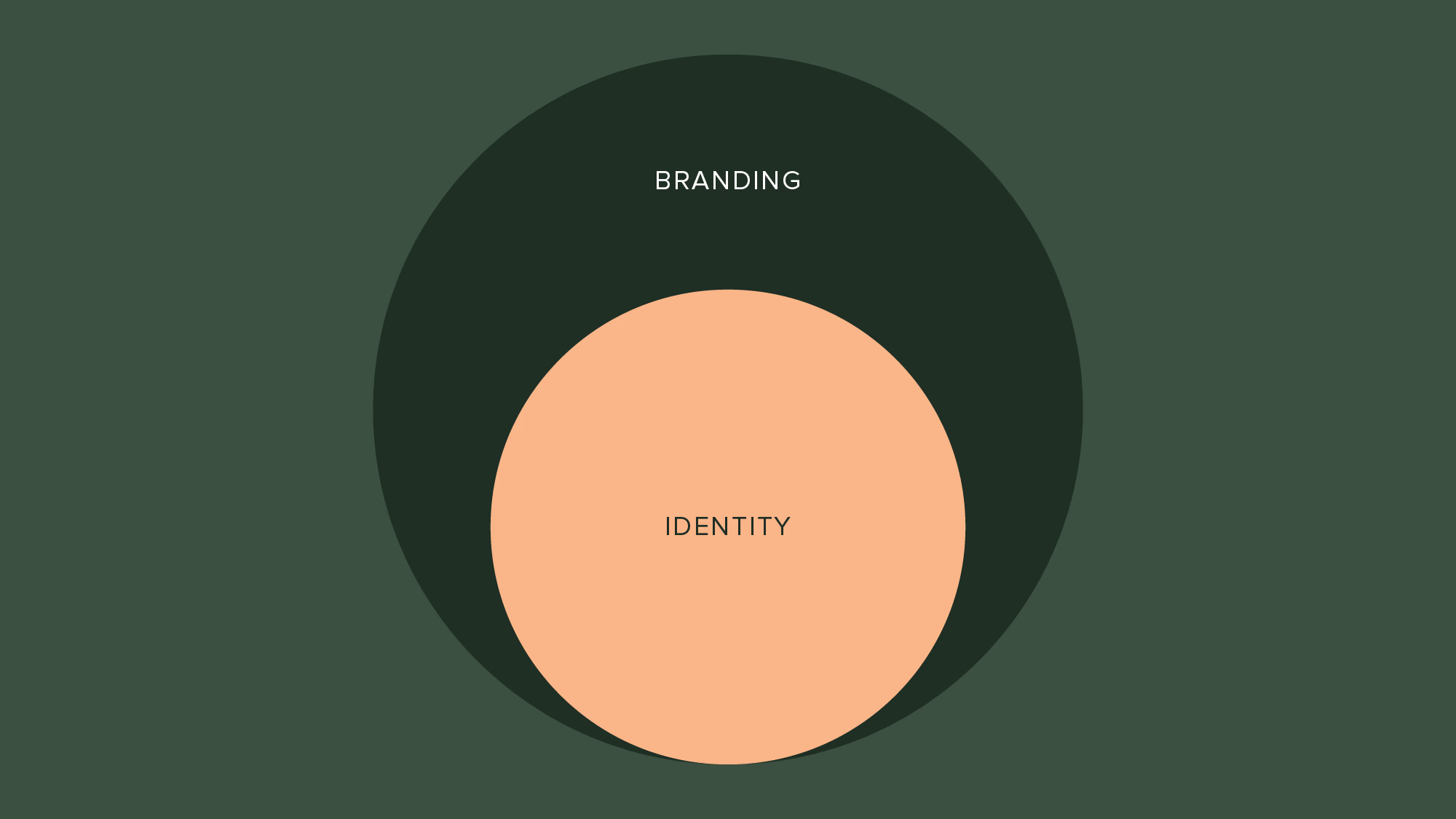Sustainability has rapidly become one of the most pressing issues in the global luxury industry, and the luxury jewelry sector is no exception. Traditionally, jewelry has been associated with indulgence, exclusivity, and rare materials — all of which contribute to a significant environmental footprint. However, as awareness grows around the ethical and ecological impact of jewelry production, brands are increasingly being challenged to adapt and find solutions that balance luxury with sustainability.
For luxury jewelry brands, the path to sustainability is fraught with challenges, but also teeming with opportunities to innovate, redefine consumer relationships, and drive positive change. How are top jewelry houses addressing this issue, and what does the future of sustainable luxury jewelry look like? Let’s delve into the challenges these brands face and the strategies they are adopting to embrace sustainability.
1. The Environmental Impact of Jewelry: Understanding the Challenges
The production of luxury jewelry involves the mining and extraction of precious metals and gemstones, which often come with significant environmental costs. Traditional mining practices have been known to contribute to deforestation, habitat destruction, and pollution. Furthermore, the industry’s reliance on materials like gold, diamonds, and platinum often leads to questions around supply chain transparency and the ethics of sourcing.
1.1 The Environmental Footprint of Precious Metals and Gemstones
Mining for precious metals such as gold and silver, as well as gemstones like diamonds, is resource-intensive and can have harmful effects on the environment. Gold mining, in particular, can lead to soil erosion, mercury pollution, and water contamination. Diamond mining, especially in regions with poor labor and environmental standards, can raise concerns about the use of child labor, conflict diamonds, and unsustainable practices.
The challenge for luxury jewelry brands is to reconcile these environmental impacts with their brand image of refinement and luxury. With consumers increasingly demanding transparency and ethical production practices, many brands have been forced to examine their supply chains and embrace new approaches to sourcing materials.
1.2 Addressing the Demand for Ethical Practices
Luxury jewelry brands also face increasing scrutiny over ethical sourcing. Diamonds and other gemstones, in particular, have long been linked to conflict zones, where the mining and trading of these stones contribute to violence and human rights abuses. The Kimberley Process certification has sought to address the issue of conflict diamonds, but critics argue that it remains insufficient in curbing the trade of blood diamonds.
For high-end jewelry brands, there is also pressure to ensure that workers throughout the supply chain are treated fairly and paid justly. This involves moving beyond surface-level claims of fair trade and genuinely addressing labor conditions, living wages, and the empowerment of local communities.
2. Sustainable Sourcing: Meeting Consumer Demands for Transparency
In response to these growing environmental and ethical concerns, luxury jewelry brands are rethinking their approach to sourcing materials, with an emphasis on transparency, traceability, and sustainability.
2.1 Ethical Sourcing of Diamonds and Gemstones
One of the most significant challenges in the luxury jewelry sector is ensuring the ethically sourced status of diamonds and gemstones. Increasingly, brands are turning to lab-grown diamonds as an alternative to mined diamonds. Lab-grown diamonds are virtually identical to natural diamonds in terms of their chemical structure, but they are produced in a controlled laboratory setting, which eliminates the negative environmental impacts associated with traditional mining.
Leading brands like Tiffany & Co. have made significant strides in incorporating lab-grown diamonds into their collections. Tiffany, for example, has launched the Tiffany True collection, which features diamonds that are both mined and lab-grown, with complete transparency about the origins of each stone. Other brands, such as De Beers, have also launched lab-grown diamond lines under their Lightbox Jewelry brand.
Beyond diamonds, jewelry brands are exploring ethical sourcing options for other gemstones as well. The use of sustainable mining techniques and the implementation of traceability technologies (such as blockchain) are emerging as ways to ensure that gemstones are responsibly sourced. Some companies are also turning to recycled gemstones or using vintage stones in new pieces to reduce their reliance on new mining.
2.2 Recycled and Reclaimed Materials
The jewelry industry is increasingly turning to recycled materials as a means of reducing its environmental impact. Recycled gold, for instance, offers an alternative to newly mined gold, reducing the need for destructive mining practices. Top brands like Chopard have committed to using 100% Fairmined gold — a certification that ensures gold is sourced in a way that adheres to strict environmental and social standards.
In addition to gold, jewelry brands are exploring the use of recycled silver, platinum, and metals to create new pieces. The growing trend of upcycling old jewelry — where vintage pieces are redesigned and refurbished — also plays a role in reducing the demand for new precious metals and gemstones.
3. Innovations in Design and Materials: Embracing a New Kind of Luxury
Luxury jewelry brands are finding that sustainability can be not only a necessity but also an opportunity for creative innovation. Today’s top designers are looking beyond traditional materials to find new, sustainable alternatives that still meet the high standards of luxury.
3.1 Lab-Grown Gemstones and Materials
As mentioned earlier, lab-grown diamonds are rapidly gaining acceptance in the luxury jewelry market, but other lab-grown gemstones are also making their way into new collections. Lab-grown sapphires, rubies, and emeralds are starting to appear in designs from ethical jewelers. These stones offer a more sustainable option without compromising on the quality or beauty expected from luxury jewelry.
Other innovative materials include sustainable pearls, which are cultivated in eco-friendly environments, and bio-based alternatives to metals like gold. For example, bamboo-based or plant-based materials are emerging in the jewelry industry as eco-conscious alternatives.
By introducing these new materials, jewelry brands can offer consumers a more sustainable and ethically responsible product, which still maintains the level of exclusivity and craftsmanship associated with luxury.
3.2 Circular Economy: The Role of Recycling and Reuse
The concept of a circular economy has gained traction in recent years, and luxury jewelry brands are increasingly embracing it as part of their sustainability initiatives. The idea is simple: instead of relying on a linear process where resources are mined, used, and discarded, a circular economy encourages the reuse, refurbishment, and recycling of materials.
Brands like Cartier and Van Cleef & Arpels are beginning to incorporate circularity into their operations by offering repairs, refurbishments, and upcycling services to customers. These services allow consumers to extend the life of their jewelry, while also encouraging a more sustainable and less wasteful approach to luxury.

4. Communicating Sustainability to Consumers: Transparency and Trust
As sustainability becomes an increasingly important factor in consumers’ purchasing decisions, luxury jewelry brands must also focus on communicating their sustainability efforts effectively. Transparency is key in building consumer trust and loyalty.
4.1 Certification and Auditing
One way jewelry brands are ensuring accountability is through certification schemes and third-party audits. For example, the Fairmined and Fairtrade certifications guarantee that gold and other precious metals are sourced in an ethical and sustainable manner. Similarly, the Responsible Jewellery Council (RJC) sets global standards for the jewelry industry, helping brands ensure that their supply chains are transparent and ethical.
In addition, blockchain technology is being used to track and verify the origins of diamonds and other precious materials, offering customers full transparency about the journey of their jewelry. This technology ensures that consumers can trust the brand’s claims of sustainability and ethics.
4.2 Sustainability as a Marketing Tool
Sustainability is increasingly becoming a differentiating factor for luxury brands. Consumers are now looking for more than just luxury products; they want products that align with their values. Brands that emphasize sustainability and ethically sourced materials are gaining an edge, particularly among younger, socially conscious consumers.
For example, Chopard’s “The Journey to Sustainable Luxury” initiative highlights its commitment to using sustainable gold, while Tiffany & Co. has launched the “Tiffany Save the Wild” campaign to support conservation efforts. These efforts not only resonate with consumers but also help shape the brand’s identity as a forward-thinking and responsible luxury house.
5. Conclusion: The Future of Sustainable Luxury Jewelry
As the luxury jewelry sector continues to evolve, sustainability is no longer an afterthought but an integral part of how brands approach design, production, and consumer engagement. While there are undoubtedly challenges — particularly in sourcing and production — the opportunities for innovation are vast.
Top jewelry houses are finding ways to blend tradition with innovation, creating products that are both beautiful and responsible. Through sustainable sourcing, eco-conscious design, and transparency, luxury jewelry brands are proving that it is possible to redefine what luxury means in the modern age.
As consumer preferences shift towards ethical consumption, the luxury jewelry industry’s commitment to sustainability will play a pivotal role in shaping the future of the sector.
The challenge lies in balancing the demands for beauty, rarity, and exclusivity with the urgent need for ethical and eco-conscious practices. For those brands that succeed, the opportunity is clear: they will not only lead the way in sustainable luxury but also contribute to a more responsible and inclusive future for the jewelry industry as a whole.

















































